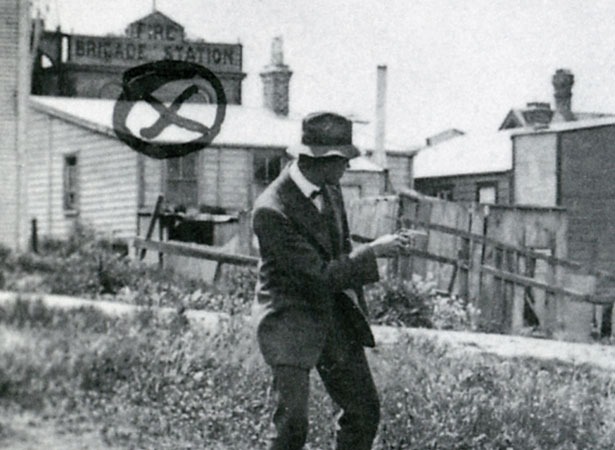
Striking worker Fred Evans was badly injured in the Bay of Plenty goldmining town of Waihī. He died next day.
The Australian-born stationary-engine driver belonged to the militant Waihi Trade Union of Workers, which was affiliated to the New Zealand Federation of Labour (‘Red Feds’) and opposed to the Waihi Goldmining Company. In May 1912 the union went on strike in protest at the formation of a company-inspired breakaway union.
Subsequent violence peaked on ‘Black Tuesday’, 12 November, when strike-breakers and police stormed the miners’ hall, which was defended by only a few men. Both sides were armed. During a struggle, a strike-breaker was shot in the knee. As the unionists retreated, Constable Gerald Wade was shot in the stomach. Evans was struck down by a police baton and, according to some reports, savagely beaten by strike-breakers.
Left for 1½ hours in a cell before being taken to hospital, Evans never regained consciousness and died next day. Constable Wade survived. As the strike collapsed, strikers and their families were hunted through the streets by armed mobs. Hundreds of people fled Waihī.
Read more on NZHistory
'Black Tuesday' – The 1912 Waihi strikeFred EvansGrave of Fred Evans – The 1912 Waihi strikeNew Zealand crime timeline – Crime timelineWaihī memorial hall – Memorials register
External links
How to cite this page
'Striker fatally wounded at Waihī', URL: https://nzhistory.govt.nz/striker-killed-at-waihi, (Ministry for Culture and Heritage), updated 15-Sep-2020
